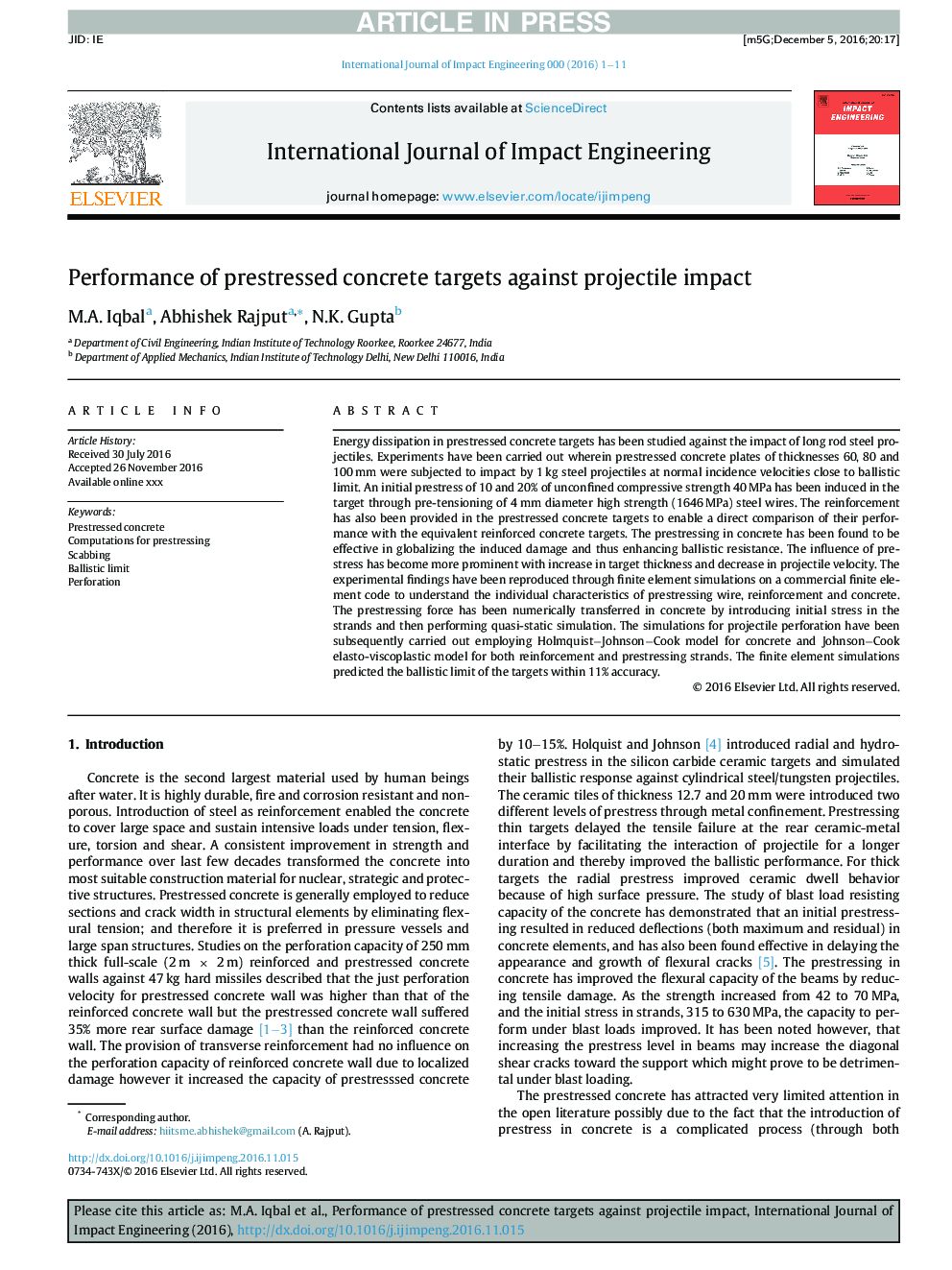| Article ID | Journal | Published Year | Pages | File Type |
|---|---|---|---|---|
| 7173056 | International Journal of Impact Engineering | 2017 | 11 Pages |
Abstract
Energy dissipation in prestressed concrete targets has been studied against the impact of long rod steel projectiles. Experiments have been carried out wherein prestressed concrete plates of thicknesses 60, 80 and 100Â mm were subjected to impact by 1Â kg steel projectiles at normal incidence velocities close to ballistic limit. An initial prestress of 10 and 20% of unconfined compressive strength 40Â MPa has been induced in the target through pre-tensioning of 4Â mm diameter high strength (1646Â MPa) steel wires. The reinforcement has also been provided in the prestressed concrete targets to enable a direct comparison of their performance with the equivalent reinforced concrete targets. The prestressing in concrete has been found to be effective in globalizing the induced damage and thus enhancing ballistic resistance. The influence of prestress has become more prominent with increase in target thickness and decrease in projectile velocity. The experimental findings have been reproduced through finite element simulations on a commercial finite element code to understand the individual characteristics of prestressing wire, reinforcement and concrete. The prestressing force has been numerically transferred in concrete by introducing initial stress in the strands and then performing quasi-static simulation. The simulations for projectile perforation have been subsequently carried out employing Holmquist-Johnson-Cook model for concrete and Johnson-Cook elasto-viscoplastic model for both reinforcement and prestressing strands. The finite element simulations predicted the ballistic limit of the targets within 11% accuracy.
Related Topics
Physical Sciences and Engineering
Engineering
Mechanical Engineering
Authors
M.A. Iqbal, Abhishek Rajput, N.K. Gupta,
